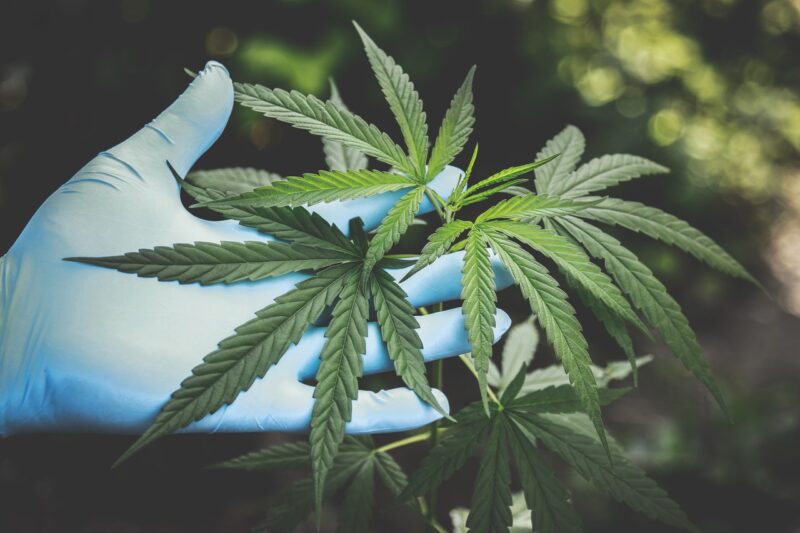The marijuana train is only just getting loaded. Lots of companies are already on board, with edibles, ointments, and other products already released. But the research on this plant has barely reached the tip of the iceberg.
Now that it’s legal to study marijuana in many places, we’re learning more about this super-plant.
You see cannabis products in the health, food, and beauty industries. It’s on the rise in both THC and non-THC forms. Cannabis producers are just getting started, though.
As we’re waiting for the rest of the country to get on board with legalizing cannabis, watch as these upcoming marijuana trends show up on the horizon.
1. Drive-Thru and Delivery Dispensaries

Cannabis dispensaries have a lot of high standards they have to meet in order to stay in business. The requirements depend on the state, but for the most part, a dispensary needs:
- Dispensary registration certificates
- A marijuana license for producing, processing, or selling marijuana
- To display its license in a conspicuous manner
- To have all its products tested by an independent lab before selling anything
- To have all products comprehensively labeled based on state and local requirements
- Regular audit practices performed
- Thorough background screening of employees
Between these and all the other expectations of a dispensary, owners already have their hands full. It’s no wonder that many cannabis businesses choose to avoid the delivery requirements, too. However, the pandemic of COVID-19 has impacted how people shop.
Now, more dispensaries are stepping up. They’re paying the extra fees and doing the work to make their businesses drive-thru and delivery-friendly. You can expect to see this trend increase over the next few years.
2. The Medical Industry Wants In

Until recently, marijuana was treated like it was as dangerous as opioids and cocaine. Global research has disputed this successfully. The medical industry is beginning to see the benefits of cannabis over addictive pharmaceuticals.
Leaving Opioids Behind
The opioid epidemic can’t be ignored anymore. Physicians have begun to feel the effects of the government crackdown on prescription painkillers.
Doctors have to provide extensive documentation along with an opioid prescription. They must show that they tried everything else before giving a patient addictive Schedule IV drugs.
Even after their documentation is complete, they are supposed to treat the problem, not the symptoms, and wean the patient off opioids. Failure to do so can result in the loss of their medical license.
Can Marijuana Be the Answer?
Unlike synthetic opioids, cannabis is an all-natural plant. It has more than 100 non-psychoactive components. The only psychoactive part is THC, and this can be separated out.
In fact, there are more than 700 different strains of cannabis, as explained in this article by Veriheal. Many of them are completely harmless and federally legal.
If a patient can benefit from the effects of cannabis without the THC, doctors can legally recommend cannabinoids in any state.
Physicians are eyeing THC-based marijuana as a possible replacement for prescription painkillers. It’s more beneficial and less addictive, and now that it’s a Schedule I drug, it’s safer for them to recommend.
The medical industry is already opening its eyes to the advantages of marijuana for the patient and the healthcare field. This trend is going to continue to rise as research exposes more benefits of cannabis on the body.
3. New Products Will Be Released

Right now, companies are trying to release their products based on what they think people need. As the consumers respond with their suggestions and technology evolves, we’ll see a variety of releases that don’t exist on the market yet.
One of the most highly anticipated requests on the horizon is THC-enhanced drinks. The industry has already released low-dose cannabis canned drinks.
These lightly-laced THC drinks are geared toward helping people control their consumption. Still other beverages have up to 100 mg THC for a shot-like effect.
As farmers and breeders continue to create new strains of cannabis, expect to see more variety in the current product line. We’ll also see companies roll out new skincare, medical, and food products. Even the fashion industry is stepping into the marijuana limelight.
4. Marijuana E-Commerce Will Skyrocket

E-commerce has taken over as the dominant method of shopping. It was already popular before COVID, and now, post-pandemic, it’s the preferred way to stock homes around the world.
The CBD industry has been able to benefit from website platforms and online sales with a whopping 700% growth. But THC-based products have remained limited due to their questionable legal status.
Cannabis merchants have already opened e-commerce stores to sell CBD. As long as it has less than or equal to 0.3% THC, it’s legal in the entire country. But with medical marijuana cards on the rise and people still shell-shocked over COVID, watch for an increase in online sales of THC products.
5. New Medical Uses for Marijuana

We already know that cannabis is like a super-natural drug that can help almost every medical condition. Yet, aside from one drug that is FDA-approved for reducing seizure symptoms, Epidiolex, doctors can’t claim marijuana treats anything.
Lots of research has been done on the plant, but most of it was performed on rodents. Until recently, the tight restrictions on marijuana as a Schedule IV drug have prevented human research.
Cannabis isn’t a Schedule IV drug anymore, though. It has acknowledged health benefits, and people are volunteering for clinical trials.
We already have a lot of support that shows cannabis can be helpful in reducing the symptoms of vomiting and nausea in chemo patients. More studies are in process to see how marijuana may aid in other conditions.
Will it be helpful in alleviating chronic pain, symptoms of multiple sclerosis, and insomnia? Clinical trials are already being investigated, and the trend will continue to rise.
A lot of these clinical trials came about because of patient demand. As more people understand the potential benefits of marijuana on their illnesses, expect to see a surge involuntary human research.
Conclusion
You don’t have to be involved as a cannabis user to see there’s a huge market ready to be tapped into. As more companies invest in marijuana products to fill their consumer’s needs, these five trends are worth keeping an eye on.












